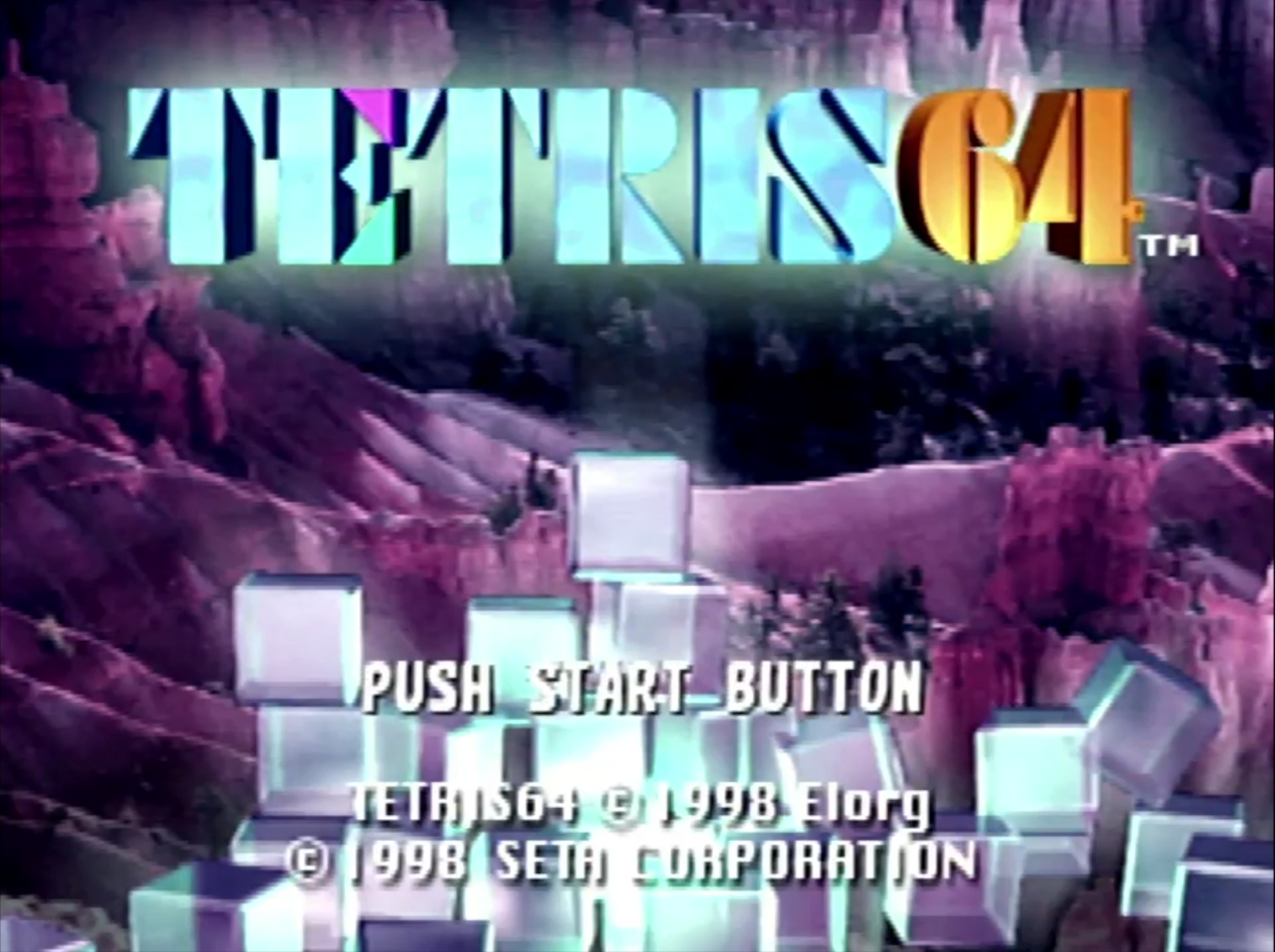The bio-Soviet mind game.
Who the hell doesn’t like Tetris? We’ve all played it. Our parents have played it. Heck, even our grandparents have probably played it. The game has been on nearly every device imaginable from the old Apple II to Game Boy to Nintendo DS just to name a few. With the Nintendo 64, things were no different. When it was all said and done, the N64 was home to four Tetris games - Tetrisphere, The New Tetris, Magical Tetris Challenge, and for our topic of discussion today, Tetris 64.
Tetris 64 was a Japan only title that released on November 13, 1998. The game was created by developer Amtex and published by Seta Corporation - the guys that brought you hit N64 classics such as the Eikō no St. Andrews golf sim, Chopper Attack and Morita Shōgi 64…right. Perhaps the most notable difference in this iteration of Tetris has to be the peripheral that was made specifically for the game - the Nintendo 64 bio sensor. Developed by Seta, this device would actually read your heart rate while you’re playing the game in the Bio Tetris mode. After plugging the sensor into the controller pak slot, users would then attach the sensor to their earlobe to make use of the device. It was a pretty wild idea, even by today’s standards, but it is something that definitely set Tetris 64 apart from the other N64 Tetris titles.
But how does bio sensor play actually work? While playing with the sensor, the game changes the pieces that appear. One top of standard pieces, there are two additional groups of “bio” tetrominoes that come into play - group A or group B. If your heart rate is high, somewhat tricky blocks from group B will be set to rain down. If you’re relatively calm and have a reasonable heart rate, some easier pieces from group A will appear. A beating heart appears on screen that indicates the level of your heart rate. (It ranges from red to yellow to green to blue, with red being on the high end and blue being on the low end.) It should be noted that you can also reverse these setting in the options. Overall, the bio sensor adds a really interesting twist to a formula that everyone already knows. I’m usually not one for goofy shaped pieces in my Tetris games, but it really does help set the game apart.
I did manage to do a bit of an experiment to test the accuracy of the sensor. Making use of the game’s Bio Sensor test under the options menu, you’re able to see your heart rate up on the screen. While testing this, I compared the heart rate in the game to what my current heart rate reading from my Apple Watch. In my unscientific tests, I found the bio sensor readings to be pretty comparable to what was showing up on my watch.
Outside of the bio sensor capabilities, Tetris 64 is a pretty decent puzzler. The other modes on offer here are the standard games of Tetris as well as a new take called Giga Tetris. Giga Tetris is identical to the standard game, however this mode has giant tetrominoes that break up into smaller pieces. It’s always interesting to see different Tetris titles try something a little bit new when it comes to mixing things up, but sometimes extra modes and ideas seem to just be added for the sake of having something new. I thought I would initially hate it, but In this case, I had a surprising amount of fun and challenge interacting with these gigantic sized blocks. It was satisfying to make matches with the big blocks and then see them break down and clear more lines.
The visuals here are a bit lackluster, featuring some pretty muddy, washed out still images behind the puzzles. There are four themes to choose from and the deeper you get into a game, the images do change. The sound here is a little lackluster, with the four music tracks being assigned to the themes mentioned above. It should be noted that Tetris 64 does feature four player simultaneous multiplayer mode. Not only that, but the game is entirely in English, making this incredibly import friendly (as long as you have a way to play Japanese Nintendo 64 games).
Tetris 64 is a unique package and actually quite a good Tetris game. There have certainly been better titles in the series released since 1998, but the whole bio sensor mechanic is interesting and something that hasn’t (as far as I know!) been replicated. It’s crazy to think that even back then a product like this existed on a Nintendo platform, and not only that, one that does exactly what it sets out to do. Minimalistic presentation aside, Tetris 64 is fun to play and a great addition to the Nintendo 64 library.












No comments:
Post a Comment